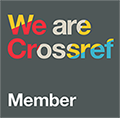Yapı İskelesi (Scaffolding) Yönteminin Matematik Öğretimindeki Rolü Üzerine Bir Meta-Analiz Çalışması
DOI:
https://doi.org/10.33308/26674874.2025393920Anahtar Kelimeler:
Yapı İskelesi- Matematik Öğretimi- Öğrenme DesteğiÖzet
Bu meta-analiz çalışmasının amacı, öğrenmeyi öğrenme süreçlerinde öğrencilere destek sağlayıcı bir yöntem olarak geliştirilen yapı iskelesi (scaffolding) yönteminin matematik öğretimi üzerindeki etkisini incelemektir. Meta-analiz çalışması için araştırmaya dâhil edilme ve hariç tutulma kriterlerine uyan 13 çalışma dâhil edilmiştir. Kodlanan veriler CMA 4.0 uygulaması ile analiz edilmiştir. Bu araştırma Hedge’s g etki büyüklüğü kullanılarak incelenmiş olup analiz sonuçlarına göre verilerin heterojen olduğu görülmüştür. Araştırmada heterojenliğin kaynağını tespit etmek için alt disiplin ve sınıf düzeyi değişkenlerine göre analog ANOVA analizi yapılmıştır. Heterojenliğin kaynağı okul düzeyi ve alt disiplin olarak tespit edilmiştir. Ayrıca araştırmaya ait meta-regresyon analizlerine göre yaş ve teknolojik uygulama kullanımı moderatör değişkenlerinin, matematik öğretimi üzerindeki etki büyüklüğünü etkilemediği sonucuna ulaşılmıştır. Araştırma sonucunda, yapı iskelesi yönteminin matematik öğretiminde kullanılabilecek etkili ve bütünleştirici bir yöntem olduğu tespit edilmiştir. İskelenin matematik eğitiminde en etkili olduğu koşulları daha iyi tespit edebilmek için daha fazla araştırmaya ihtiyaç duyulmaktadır.
İndirmeler
Referanslar
Anghileri, J. (2006). Scaffolding practices that enhance mathematics learning. Journal of Mathematics Teacher Education, 9(1), 33–52. DOI: https://doi.org/10.1007/s10857-006-9005-9
Ardana, I. M., Ariawan, I. P. W., & Divayana, D. G. H. (2017). Measuring the effectiveness of BLCS Model (Bruner, Local Culture, Scaffolding) in mathematics teaching by using expert system-based cse-ucla. International Journal of Education and Management Engineering, 7(4), 1–12. DOI: https://doi.org/10.5815/ijeme.2017.04.01
Atalay-Öcal, B. (2018). Scaffolding stratejilerinin müzik öğretmeni adaylarının çalgı öğretme ve yansıtıcı düşünme becerilerine etkisi [Yayımlanmamış doktora tezi]. Marmara Üniversitesi.
Bature, I. J., & Jibrin, A. G. (2015). The perception of preservice mathematics teachers on the role of scaffolding in achieving quality mathematics classroom instruction. International Journal of Education in Mathematics, Science and Technology, 3(4), 275–283. DOI: https://doi.org/10.18404/ijemst.76395
Ben-David Kolikant, Y., &, Broza, O. (2011). The effect of using a video clip presenting a contextual story on low-achieving students’ mathematical discourse. Educational Studies in Mathematics, 76(1), 23-47. DOI: https://doi.org/10.1007/s10649-010-9262-5
Borenstein, M., Hedges, L. V., Higgins, J. P. T., & Rothstein, H. R. (2009). Introduction to meta-analysis. Wiley. DOI: https://doi.org/10.1002/9780470743386
Brower, R. S., Woods, C. S., Jones, T. B., Park, T. J., Hu, S., Tandberg, D. A., ... & Martindale, S. (2017). Scaffolding mathematics remediation for academically at-risk students following developmental education reform in Florida. Community College Journal of Research and Practice, 42(2), 112–128. DOI: https://doi.org/10.1080/10668926.2017.1279089
Çakmak Gürel, Z. (2023). Adaptive and affective support of mathematics teachers from the perspective of secondary school students. Necatibey Eğitim Fakültesi Elektronik Fen ve Matematik Eğitimi Dergisi, 17, 695–719. https://doi.org/10.17522/balikesirnef.1357528 DOI: https://doi.org/10.17522/balikesirnef.1357528
Campbell Collaboration. (2022). Effect size calculator. https://www.campbellcollaboration.org/research-resources/effect-size-calculator.html
Chase, K., & Abrahamson, D. (2015). Reverse-scaffolding algebra: Empirical evaluation of design architecture. ZDM – Mathematics Education, 47(7), 1195–1209. DOI: https://doi.org/10.1007/s11858-015-0710-7
Çilingir, S. K. (2018). Sınıf öğretmenlerinin matematik derslerinde yapı iskelesine yatkın olma düzeylerinin incelenmesi [Yayımlanmamış yüksek lisans tezi]. Kırıkkale Üniversitesi.
Cobb, P., Yackel, E., & McClain, K. (Eds.). (2000). Communicating and symbolizing in mathematics: Perspectives on discourse, tools and instructional design. Lawrence Erlbaum Associates.
Cohen, J. (1988). Statistical power analysis for the behavioral sciences (2nd ed.). Lawrence Erlbaum Associates.
Dagoc, D. A., & Tan, D. A. (2018). Effects of metacognitive scaffolding on the mathematics performance of grade 6 pupils in a cooperative learning environment. International Journal of English and Education, 7(4), 378–389.
Dove, A., & Hollenbrands, K. (2013). Teachers’ scaffolding of students’ learning of geometry while using a dynamic geometry program. International Journal of Mathematical Education in Science and Technology, 45(5), 668–681. DOI: https://doi.org/10.1080/0020739X.2013.868540
Eick, C. J. (2002). Use of the learning cycle with inters: A case study. School Science and Mathematics, 102(1), 32–42.
Erdoğan, A., & Erdoğan, E. Ö. (2018). Scaffolding students in non-routine problem solving environment: The case of two mathematics teachers. Journal of Human Sciences, 14(4), 4850–4864. DOI: https://doi.org/10.14687/jhs.v14i4.5016
Glass, G. (1982). Meta-analysis: An approach to the synthesis of research results. Journal of Research in Science Teaching, 19(2), 93-112. DOI: https://doi.org/10.1002/tea.3660190202
González, G., & DeJarnette, A. F. (2015). Teachers’ and students’ negotiation moves when teachers scaffold group work. Cognition and Instruction, 33(1), 1-45. DOI: https://doi.org/10.1080/07370008.2014.987058
Hogan, K., & Pressley, M. (1997). Scaffolding scientific competencies within classroom communities of inquiry. In K. Hogan & M. Pressley (Eds.), Scaffolding student learning: Instructional approaches and issues (pp. 74–98). Brookline Books.
Hogan, K., Nastasi, B. K., & Pressley, M. (1999). Discourse patterns and collaborative scientific reasoning in peer and teacher-guided discussions. Cognition and Instruction, 17(4), 379–432. DOI: https://doi.org/10.1207/S1532690XCI1704_2
Huang, Q., Sun, J., Lau, E. Y. H., & Zhou, Y. (2022). Linking Chinese mothers’ and fathers’ scaffolding with children's initiative and mathematics performance: A moderated mediation model. Early Childhood Research Quarterly, 59, 74–83. DOI: https://doi.org/10.1016/j.ecresq.2021.11.001
Ihechukwu, N. (2020). Impact of instructional scaffolding approach on secondary school students' achievement in mathematics. Malikussaleh Journal of Mathematics Learning (MJML), 3(2), 46–50. DOI: https://doi.org/10.29103/mjml.v3i2.3168
İlyas, B. M., Rawat, K. J., Bhatti, M. T., & Malik, N. (2013). Effect of teaching of algebra through social constructivist approach on 7th graders’ learning outcomes in Sindh Pakistan. International Journal of Instruction, 6(1), 151–164.
Karabay, F. H. (2020). Matematiksel problem çözmede mobil uygulamalarla yapı iskelesi ve ipucu kullanımının ilkokul üçüncü sınıf öğrencilerinin akademik başarılarına ve bilişsel yüklerine etkisi [Yayımlanmamış yüksek lisans tezi]. Yozgat Bozok Üniversitesi.
Kereluik, K. M. (2013). Scaffolding self-regulated learning online: A study in high school mathematics classrooms [Yayımlanmamış doktora tezi]. Michigan State University.
Lipsey, M. W., & Wilson, D. B. (2001). Practical meta-analysis. Sage Publications.
Marshman, M. (2017). Identifying the mathematics middle year students use as they address a community issue. Mathematics Education Research Journal, 30(4), 355-382. DOI: https://doi.org/10.1007/s13394-017-0195-5
Mevarech, Z. R., & Iddini, V. (2021). Developing young children's mathematics knowledge and reasoning through mathematics e-book activities supported by metacognitive scaffolding. Journal of Cognitive Education and Psychology, 20(2), 179-189. DOI: https://doi.org/10.1891/JCEP-2021-0016
Molleman, L., van den Berg, P., & Weissing, F. J. (2014). Consistent individual differences in human social learning strategies. Nature Communications, 5, 3570. DOI: https://doi.org/10.1038/ncomms4570
Nason, R., Chalmers, C., & Yeh, A. (2012). Facilitating growth in prospective teachers’ knowledge: Teaching geometry in primary schools. Journal of Mathematics Teacher Education, 15(3), 227–249. DOI: https://doi.org/10.1007/s10857-012-9209-0
Pea, R. D. (2004). The social and technological dimensions of scaffolding and related theoretical concepts for learning, education, and human activity. The Journal of the Learning Sciences, 13(3), 423–451. DOI: https://doi.org/10.1207/s15327809jls1303_6
Pol, J., Volman, M., & Beishuizen, J. (2010). Scaffolding in teacher–student interaction: A decade of research. Educational Psychology Review, 22(3), 271–296.
Roschelle, J., Rafanan, K., Bhanot, R., Estrella, G., Penuel, W. R., Nussbaum, M., & Claro, S. (2010). Scaffolding group explanation and feedback with handheld technology: Impact on students’ mathematics learning. Educational Technology Research and Development, 58(4), 399–419. DOI: https://doi.org/10.1007/s11423-009-9142-9
Schmid, H. C., Stijnen, T., & White, I. R. (2021). Handbook of meta-analysis. Taylor & Francis Group. DOI: https://doi.org/10.1201/9781315119403
Şen, S., & Yıldırım, İ. (2021). CMA ile meta-analiz uygulamaları. Anı Yayıncılık.
Sutiarso, S., Coesamin, C., & Nurhanurawati, N. (2018). The effect of various media scaffolding on increasing understanding of students’ geometry concepts. Journal on Mathematics Education, 9(1), 95–102. DOI: https://doi.org/10.22342/jme.9.1.4291.95-102
Sweller, J. (1988). Cognitive load during problem solving: Effects on learning. Cognitive Science, 12(2), 257–285. DOI: https://doi.org/10.1016/0364-0213(88)90023-7
Tharpe, R., & Gallimore, R. (1988). Rousing minds to life: Teaching, learning and schooling in social context. Cambridge University Press. DOI: https://doi.org/10.1017/CBO9781139173698
Üstünel, M. F. (2016). Ödevin akademik başarıya etkisi: Bir meta-analiz çalışması [Yayımlanmamış yüksek lisans tezi]. Akdeniz Üniversitesi.
Van de Pol, J., Volman, M., & Beishuizen, J. (2010). Scaffolding in teacher–student interaction: A decade of research. Educational Psychology Review, 22, 271–296. DOI: https://doi.org/10.1007/s10648-010-9127-6
Vogel, F., Kollar, I., Ufer, S., Strohmaier, A., Reiss, K., & Fischer, F. (2021). Scaffolding argumentation in mathematics with CSCL scripts: Which is the optimal scripting level for university freshmen? Innovations in Education and Teaching International, 58(5), 512–521. DOI: https://doi.org/10.1080/14703297.2021.1961098
Wood, D., Bruner, J. S., & Ross, G. (1976). The role of tutoring in problem solving. Journal of Child Psychology and Psychiatry, 17, 89–100. DOI: https://doi.org/10.1111/j.1469-7610.1976.tb00381.x
İndir
Yayınlanmış
Nasıl Atıf Yapılır
Sayı
Bölüm
Lisans
Telif Hakkı (c) 2025 Ayşegül Fildişi- Esra Yıldız

Bu çalışma Creative Commons Attribution-NonCommercial-NoDerivatives 4.0 International License ile lisanslanmıştır.
Sisteme yüklemiş olunan makalenin kapsamı, sunduğu bulgular ve sonucu ve yorumları konusunda Yaşadıkça Eğitim [YE] dergisi Sahibi, Editör, Editör Yardımcısı, Hakemler ve Editör Kurulu'nun hiçbir sorumluluk taşımadığını kabul ederim.
Makalenin özgün olduğunu, herhangi bir başka dergiye yayımlanmak üzere gönderilmediği, daha önce yayımlanmadığını Yaşadıkça Eğitim [YE] dergisi Editörlüğü'ne beyan ederim.
Başlığı belirtilen makalenin, 5846 sayılı Fikir ve Sanat Eserleri Yasasının 22. maddesi gereğince çoğaltma, 23. maddesi gereğince yayma ve 25. maddesi gereğince her türlü taşıyıcı materyal üzerinde veya elektronik ortamda kamuya iletim haklarını Yaşadıkça Eğitim [YE] dergisine karşılıksız, koşulsuz ve süresiz olarak devredildiği, makale ile ilgili devredilen hakların dilediği zaman, mekan ve koşullarda kullanmaya Yaşadıkça Eğitim [YE] dergisinin yayıncısı olarak İstanbul Kültür Üniversitesi'nin yetkili kılınacağını onaylarım.





